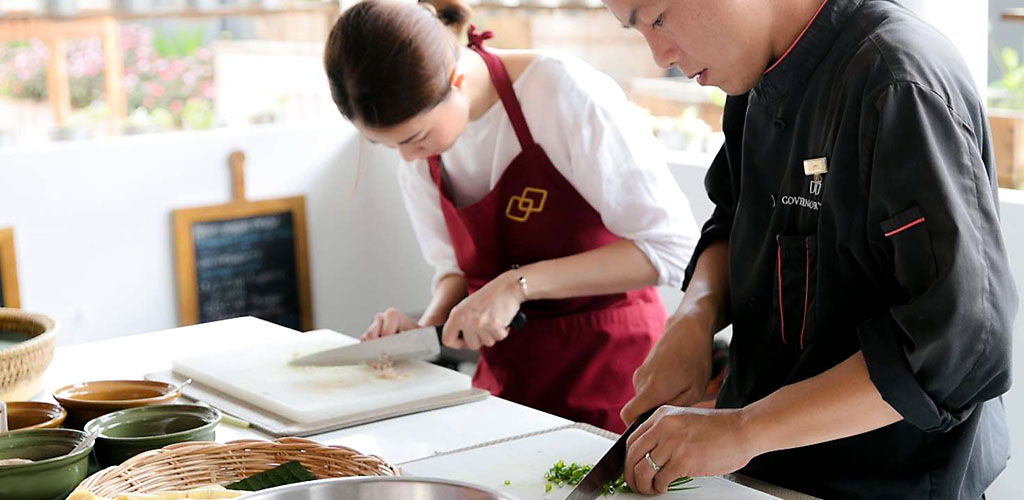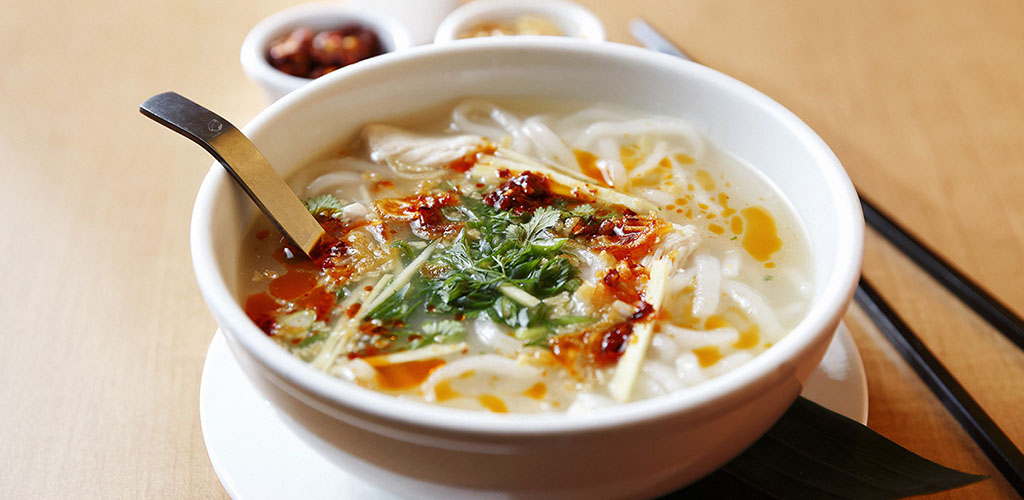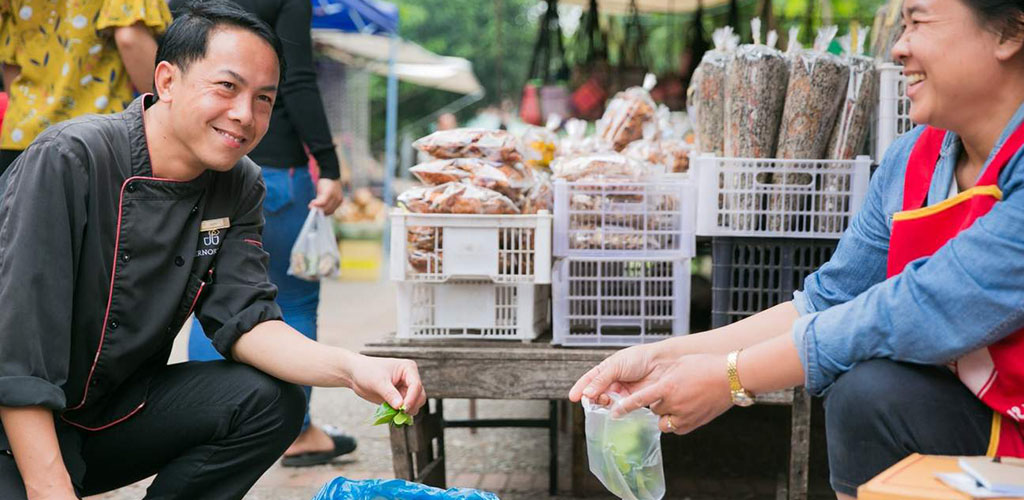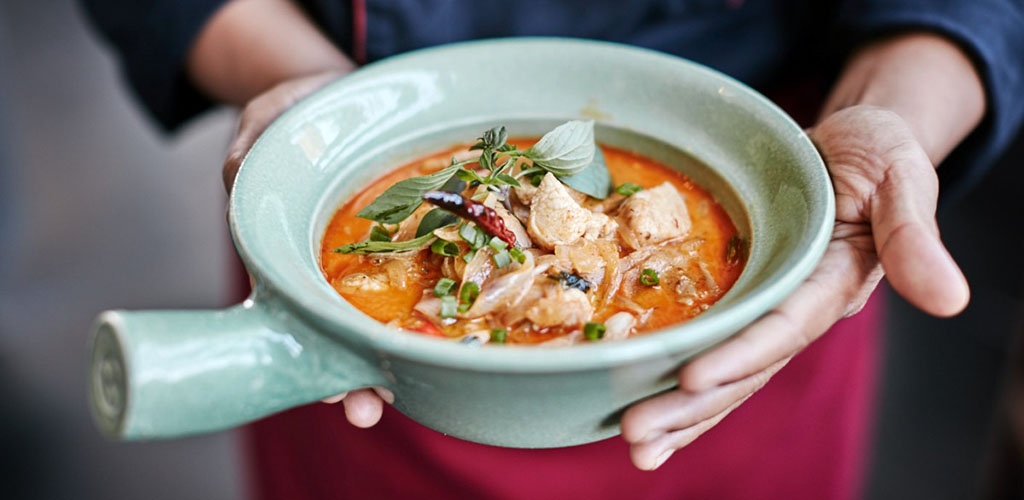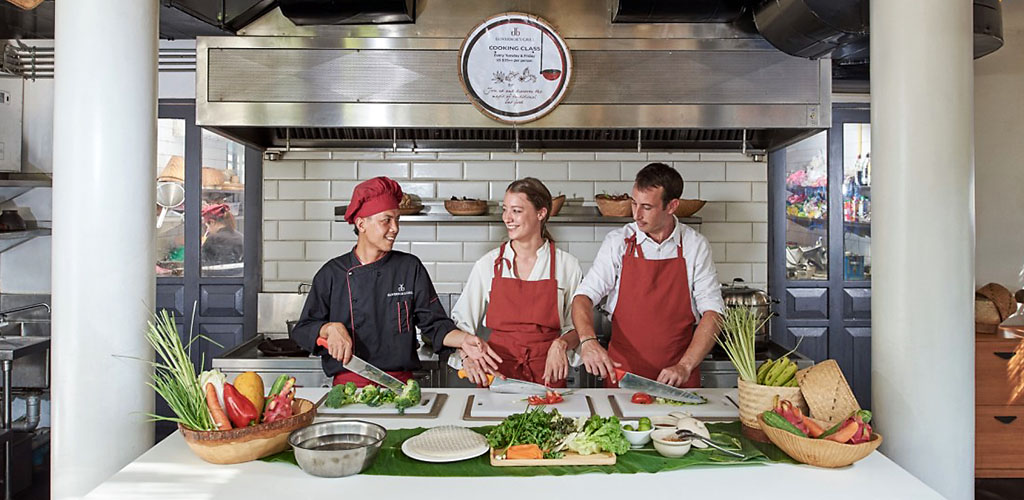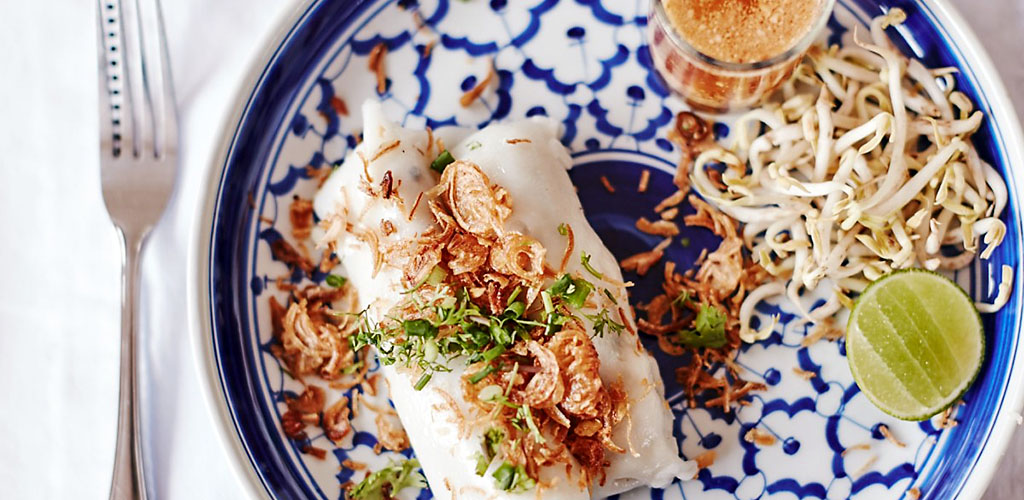Laos Food Tours
At the heart of Indochina, Laos has a cuisine that reflects the exotic diversity of the region. With sticky rice the mainstay, the lush flavors mingle freely on the tongue, creating something distinctive from its neighbors. Throw in the subtle French influence and food becomes a major highlight of traveling in the country. All our private Laos tours seek to imbue the best of the country’s cuisine, from cultivated restaurant recommendations to regional nuances and specific Asian food tours. Whether pastries and coffee in Luang Prabang or an invite into a bamboo home, our private tours respond to the tastes you’d like to relish.
Much More Than Laos Culinary Tours
It can be innovative or traditional, French-inspired or firmly Indochina, but there’s always something wonderfully rustic about Laos cooking. Kitchens are basic, even in the top restaurants, providing an arena for flair to take over. Throw in a bit of spice here, a dash of lemongrass there, experiment and let your instincts take over. With some meals it can be a disaster. Over more than 20 years we’ve tried and tested the chefs and restaurants that continually get it right. Dining recommendations are provided before you travel, with guides providing a detailed overview when you arrive. Cooking classes can be incorporated in many Laos destinations, as can the chance to cook with the locals in small villages. We help you explore French and Lao specialties in upmarket restaurants while also uncovering the delights of markets and narrow lanes and waterways. We love the local food and we want to add its delights to every private tour we guide.
Laos Cuisine
Lao cuisine, like that of neighboring Southeast Asian countries, revolves around rice. This isn't the long grain rice that Vietnamese, Central Thai and most Westerners are used to eating, however, but khao niaw, or glutinous 'sticky rice' deftly rolled into a neat, and delicious small ball and eaten with the hand. In Vientiane, the Lao capital, as indeed in all other large towns, long grain rice or khao jao is readily available--but khao niawremains the basic staple of the Lao people, and is the single most distinctive feature of Lao cuisine. Another essential is fish sauce or naam paa, which is the universal Lao condiment.
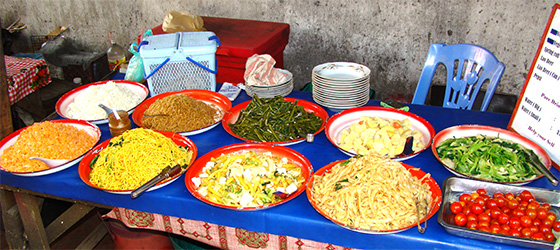 |
Sticky rice, then, forms the central theme of virtually every Lao meal. It is generally accompanied by a selection of dips, parboiled vegetables, salad, soup and various curried meat dishes or fish dishes. The sticky rice is generally served in a simple but attractive woven bamboo container called a tip khao. It's considered bad luck not to replace the lid on top of the tip khao at the end of the meal. Whilst sticky rice is eaten by hand, long grain rice is always eaten with a spoon and fork. Chopsticks are reserved for Chinese-style noodle dishes or for use in Chinese and Vietnamese restaurants.
Lao food is quite similar to Thai food--and indeed identical to much of the food eaten in Thailand's ethnically Lao Northeast. Dishes are generally cooked with fresh ingredients that include vegetables, poultry (chicken, duck), pork, beef and water buffalo. Fish and prawns are readily available but are nearly always freshwater, since Laos is a landlocked country relatively far from the sea. Up country, particularly in the north, jungle foods and game are popular--besides wild boar and deer this includes such unlikely animals as pangolin, monitor lizard, civet, wild dogs and field rats.
Padaek, a traditional Lao condiment made from pickled or fermented fish that has been cured. Often known as Lao fish sauce, it is a thicker, seasoned fish sauce that often contains chunks of fish. The fermentation takes a long time, giving padaek a rich aroma similar to fine cheese. Galleries, Markets, Shops & More |
Popular Lao dishes include tam som--really the equivalent of Thai som tam--a spicy salad made of sliced green papaya mixed with chilli peppers, garlic, tomatoes, ground peanuts, field crab, lime juice and fish sauce. This is often eaten with sticky rice and ping kai or grilled chicken. Another standby is laap, a spicy dish of minced meat, poultry or fish mixed with lime juice, garlic, chilli pepper, onion and mint. Meats used in laap are generally cooked--unlike laap dip in northern Thailand--which can be raw. If you are concerned about this, ask for laap suk, or cooked laap. Other popular Lao dishes include tom khaa kai, or chicken soup with galingale and coconut milk, kaeng jeut, or mild soup with minced pork and bitter gourd, and khao laat kaeng, or curry served on a bed of khao jao long grain rice--all virtually identical with Thai dishes of the same name served on the other side of the Mekong.
For breakfast or a snack at any time of the day, Vietnamese pho or noodle soup is extremely popular (and delicious!), as are yaw jeun or deep-fried spring rolls. For a variant, try yaw dip or fresh spring rolls. Vietnamese food is good and plentiful, especially in Vientiane and the larger cities. The same is true of Chinese food, which is generally Cantonese or Hokkienese, though some Yunnanese food is for sale in Vientiane. Other popular cuisines available include Thai--just about everywhere--Italian and French (especially in Vientiane and Luang Prabang) and South Asian (only in Vientiane). Laos is an excellent place for breakfast, chiefly because of the French colonial legacy. French bread or khao jii is freshly baked each day and served with pate, fried eggs and omelet. Good coffee is also available, and it's possible to start the day with coffee and croissants in the major urban centers, though up country the croissants may have to be replaced with pah thawng ko or deep-fried Chinese dough sticks.
Luang Prabang's Culinary Delights
In Luang Prabang, you're in for a treat: the local food is a distinctive branch of Lao cuisine, with sour and bitter flavors in some dishes. Try ohlam, a category of slow-cooked dishes with simmered dill, vegetables, and meat or fish; and larp, a pounded seasoned paste of fish or meat dish eaten with sticky rice. Luang Prabang offers good tasting sticky rice, plenty of steamed vegetables, a distinctive warm salad of lettuce, herbs, and egg, as well as delicious grilled fish and meat, generally served with one of the many hot-tasting relish-cum-salsas called jaew. You can find much of this in the small night market between the river and the post office, as well as in restaurants a specializing in Luang Prabang food. You'll also find Chinese and French restaurants, somewhat pricey and generally good. Try eating noodle soup from vendors near Talad Data or other markets; you'll also want to taste the small, lettuce wrapped flavor packets sold by street vendors and generically known as miang. For more detailed information, please request our annual restaurant guide.
Fabulous Street Eats
Luang Prabang has a number of culinary specialties. Watercress grows around waterfalls and is used in salads; a river moss from the Khan River is mixed with sesame; soups are flavored with spicy or bitter-hot herbs. At market stalls you can find excellent tam som (green papaya salad), ground as you watch; locals also make tamarind jam and pineapple jam, and their own moonshine liquor, lao lao.
Markets are a great source of fresh and tasty Laos food, and good places to hunt for breakfast. Markets are humming from 8:00 AM to 9:00 AM; here you can find French bread and Spam-pate, and sometimes crude croissants. At the south side of Dara Market you can get good soups and French bread, as well as fresh mandarin juice and coffee. Look for small pineapples and finger bananas to supplement your breakfast rations.
Overlooking the Mekong, on the strip between the Palace Museum and War Xieng Thong, are several thatched and wooden structures that serve drinks, snacks and tasty main dishes; here you'll find the Banehous, and Bouasavanh restaurants, which are popular traveler hangouts for street dishes and simple fare.
There's a cluster of family-run restaurants in the vicinity of the Rama Hotel, Yong Khoune Restaurant and Visoun Restaurant have selections of Chinese and Lao dishes; Luang Prabang Restaurant serves European and Lao. Just east of Phounsab Guesthouseare two good places to eat: Luang Prabang Bakery and Le Saladier, a French restaurant. Another stretch of restaurants is in the vicinity of the Rama Hotel, south of Dara Market. For real atmosphere, Khemkhane Garden Restaurant has thatched cottages perched over the Nam Khan (Khan River), a tributary of the Mekong. Meal, or just have drinks-very pleasant.
Farther north on the Nam Khan is Duang Champa, tel. 212420, a restored mansion-restaurant and bar run by a Frenchman and his Lao wife. Naturally, they serve French and Lao specialties-atmosphere and presentation are superb. And near War Nong is L'Elephant Brasserie, with spacious seating and an eclectic menu.
A nice place to sample Lao food is Villa Santi, with Lao fixed dinners. Best to book ahead because the place could be packed with a group tour: there may be performances of traditional dance staged here. The Mouang Lao Hotel has a decent restaurant offering a wide range of Lao and Western dishes. Other hotels in town have mediocre dining rooms and bars, but L'Elephant Blanc restaurant at the luxury Hotel Souvannaphoum is worth a try. On the west side of Luang Prabang is Malee Restaurant, quite few notches down in decor, but no loss at all it the food department. Malee serves a good range of Lao dishes, including spicy eggplant soup, chicken salad with lemongrass, and curried fish dishes.
